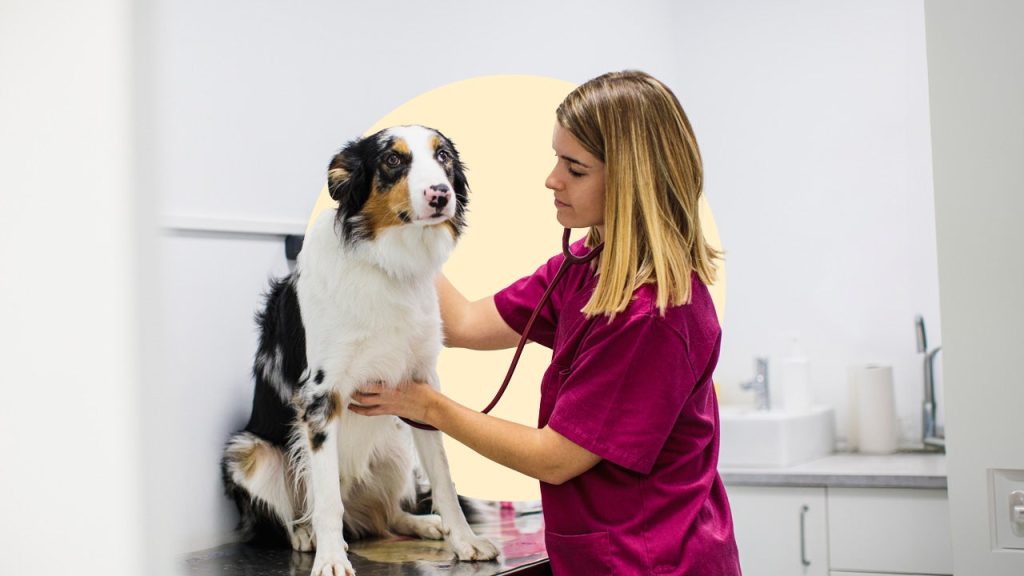Key takeaways
- Most pet insurance policies operate on a reimbursement payment model. Pet owners are required to settle fees at checkout and then seek reimbursement from their insurance provider within a specific timeframe.
- Insurers typically use percentage-based reimbursement or benefit schedule models.
- Knowing the specifics of an insurance policy, including deductibles and reimbursement rates, is crucial for effective cost management.
Ever wondered why pet insurance doesn’t work like human health insurance? There is usually no presenting your health insurance card and walking away, knowing that your insurer will cover your checkup and you can worry about shortfalls later. Instead of direct billing or in-network providers, pet insurance typically requires you to pay the vet bill up front and submit a claim for reimbursement.
This payment setup gives you the freedom to choose any licensed veterinarian, but it also means you need to plan to cover costs at checkout. Your reimbursement will only come later after correctly filing a claim. Understanding how these models work can prepare you to navigate pet care expenses with confidence.
How pet insurance reimbursements work
The pet insurance reimbursement model requires pet owners to pay a vet invoice up front. You then must file a claim to your insurance provider within a specific timeframe to receive compensation for a portion of those costs. This payment model gives pet parents the freedom to select any licensed veterinarian, specialist or emergency clinic.
Direct pay methods are permitted by a few insurers and service providers, but this payment method comes with restrictions. Your pet insurance policy will need to be accepted at your vet clinic of choice — and vice versa. For this reason, a reimbursement payment method is the most common approach among pet insurance providers.
Why pet insurance uses a reimbursement model
Most of the pet insurance companies use the reimbursement model for several reasons:
- Claims reductions: The reimbursement model transfers some financial responsibility to the pet owner. When you must pay out of pocket before being reimbursed, you are more likely to consider whether treatment is necessary. This reduces the number of claims insurers must process.
- Flexibility: Imagine an emergency situation where your pet is injured. Getting to the nearest emergency clinic or veterinarian becomes your priority. With a reimbursement model, you have the freedom to choose any licensed professional to help your pet.
- Less financial risk for insurers: By having pet owners pay for vet services up front, insurers protect themselves from overpayment or fraud.
- Simple claims process: This model also simplifies the claims process. The insurer only reviews the submitted invoice and compares it to the policyholder’s coverage limits and terms. If a policyholder neglects to file a claim within a certain timeframe, insurers are not liable for reimbursement.
- Streamlined billing process: The reimbursement model keeps things simple for vet clinics. They bill their clients without having to hassle with various insurance companies and their different structures and constraints.
- Lower premiums: Avoiding the administration and logistics of direct payment relationships with the thousands of veterinary clinics in the U.S. means that insurance providers can keep their premiums more affordable for pet parents.
Common reimbursement methods
There are two main reimbursement methods commonly used by pet health insurance companies. Understanding the pros and cons of each can help you decide which reimbursement method aligns best with your financial situation and your pet’s healthcare needs.
Percentage-based reimbursement
This is the most common reimbursement method. Under this model, the insurer reimburses a fixed percentage and, depending on your plan, it can range from 70 to 100 percent of the total veterinary bill after you have met your deductible and copays.
For example, you take your pet to the vet for an injury. The cost total is $1,000, but your policy has a $250 deductible and 80/20 co-insurance. After paying the $250, your pet insurance covers 80 percent of the remaining $750.
The final cost for you is $250 (deductible) + $150 (20 percent co-pay) = $400. Insurance reimburses you the remaining $600.
Pros
- Common across most pet insurance policies.
- Offers a balance between coverage and cost.
- Predictable and easy to calculate.
- Potential to cover the entire cost of treatment after your deductible.
Cons
- Out-of-pocket expenses can be significant, especially with expensive procedures.
- Pet owners may still need to cover a substantial portion of the cost.
- The higher your coverage, the higher your premiums.
Benefit schedules
Some insurers reimburse according to a benefit schedule. A benefit schedule lists health conditions and treatments with the maximum amount your insurance company will pay if your furry friend requires that treatment.
For instance, if your policy’s benefit schedule allocates $500 for a specific surgery, but the surgery costs $700, you would only receive a refund of $500. While this method provides clarity on the amount reimbursed, it can lead to higher out-of-pocket expenses if the actual costs exceed the scheduled benefits.
Pros
- Can be cost-effective if your vet costs align with the schedule.
- Clear, predefined reimbursement amounts for specific treatments.
- Easier to understand what you will be reimbursed for.
Cons
- Potential for significant out-of-pocket expenses if actual costs exceed scheduled benefits.
- May not fully cover more expensive or specialized treatments.
How to manage pet insurance reimbursements
With careful planning and attention to detail, managing reimbursements from your pet insurer will become easier every time you need to submit a claim.
1. Know your policy
Understanding your policy will make all the difference when it comes to submitting claims or seeking treatment for your pet. This includes knowing your deductible, copay and reimbursement percentage.
Get familiar with any exclusions or limitations in your policy. Some insurance companies have limits for breed-specific issues or pre-existing conditions. It’s also important to be aware of the waiting period when signing with a new insurer.
2. Keep detailed records
Accurate record-keeping is important for the reimbursement process. Keep copies of all veterinary invoices, receipts and related documentation, such as test results and medication prescriptions. You’ll need to submit these records to your insurer when filing a claim. You may also need them should you want to dispute a rejected claim.
3. Explore payment plans
If your vet offers payment plans, consider using them for larger vet bills. Payment plans can help you manage the cost of expensive procedures until your insurance provider processes your reimbursement. However, review the payment plan’s terms to be sure you won’t pay excessive fees and interest.
4. Have an emergency fund
Building an emergency fund for your pet’s medical expenses can be a lifesaver. You can use these savings to cover vet bills while you wait for your reimbursement, ensuring your pet gets prompt, necessary care.
5. Submit claims promptly
Submit your claims as soon as possible after receiving veterinary care to avoid reimbursement delays. Many insurers require you to submit claims forms and accompanying documents within a specified timeframe. With an uptick in online portals and mobile apps, the submission process is often quick and easy.
6. Communicate with your insurer
If you’re uncertain about your coverage or a specific claim, reach out to your insurer’s claims support department. Clear communication can prevent claim denials and ensure you receive your money back within a reasonable timeframe.
Additional tips for managing costs
Communicating with your insurer is vital for prompt reimbursement, but there are additional ways to manage your cash flow and keep up with your pet’s healthcare costs under a reimbursement model:
- Ask for a pre-treatment estimate: Before agreeing to any expensive procedures, ask your vet for a detailed estimate of the costs. This enables you to set money aside and avoid surprises when it’s time to pay the bill.
- Consider direct vet pay options: Some pet insurance providers offer a direct vet pay option, where the insurer pays the vet directly, reducing your upfront costs. Check with your provider to see if this option is available and whether your vet accepts it.
- Negotiate fees: In some cases, veterinarians may be willing to negotiate their fees, especially for high-cost treatments. It never hurts to ask if there’s any flexibility in the pricing, particularly if you’re a long-term client.
- Shop around for vets: Veterinary costs can vary significantly among clinics. Shop around for a vet who offers quality care at a reasonable price. Just be sure that you choose a licensed vet that meets your insurance provider’s requirements.
Bottom line
Understanding your pet insurance policy and its reimbursement method is essential. By knowing the portion that’s covered and having the freedom to choose a licensed vet that’s convenient and affordable, you can navigate the costs and claims process with confidence. Even when paying bills up front, knowing you’ll be reimbursed allows you to take care of your furbaby during illness or emergency.
If you’re currently shopping for pet insurance, your next step should be to compare policies from the top pet insurance companies. Take notes on reimbursement options, coverage limits and exclusions to make an informed decision. If your pet is already signed up for pet insurance, review your terms and claims process to find the fastest way to get reimbursed for your vet expenses.
Frequently asked questions
Read the full article here









